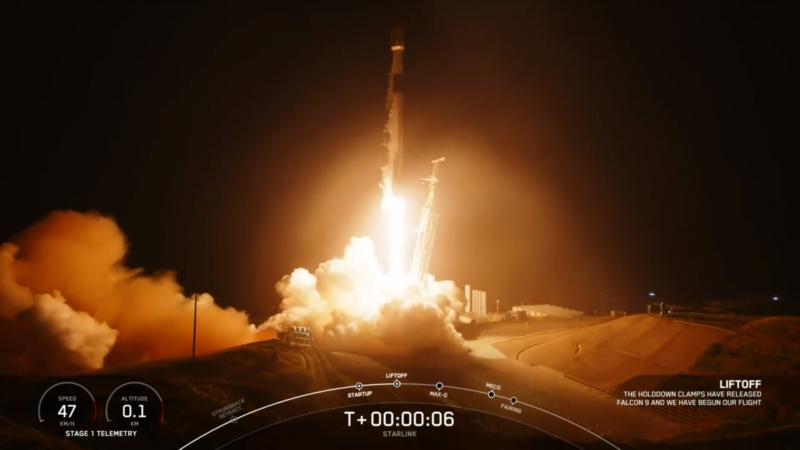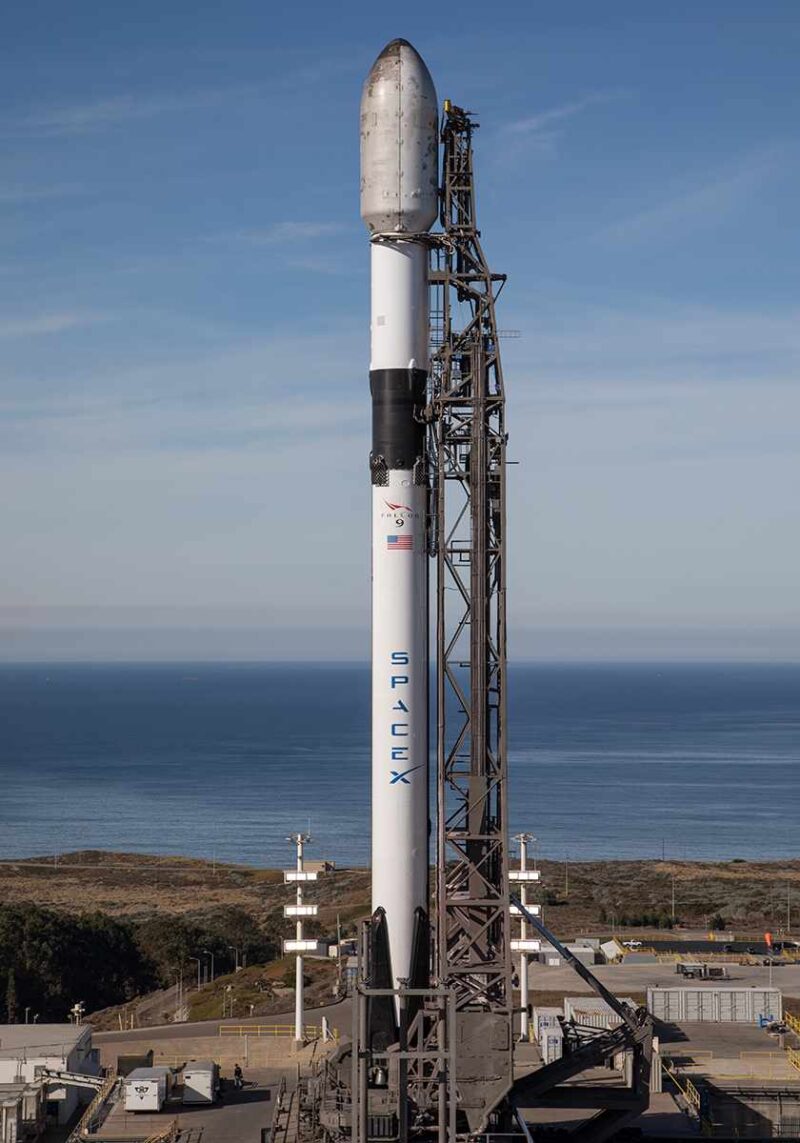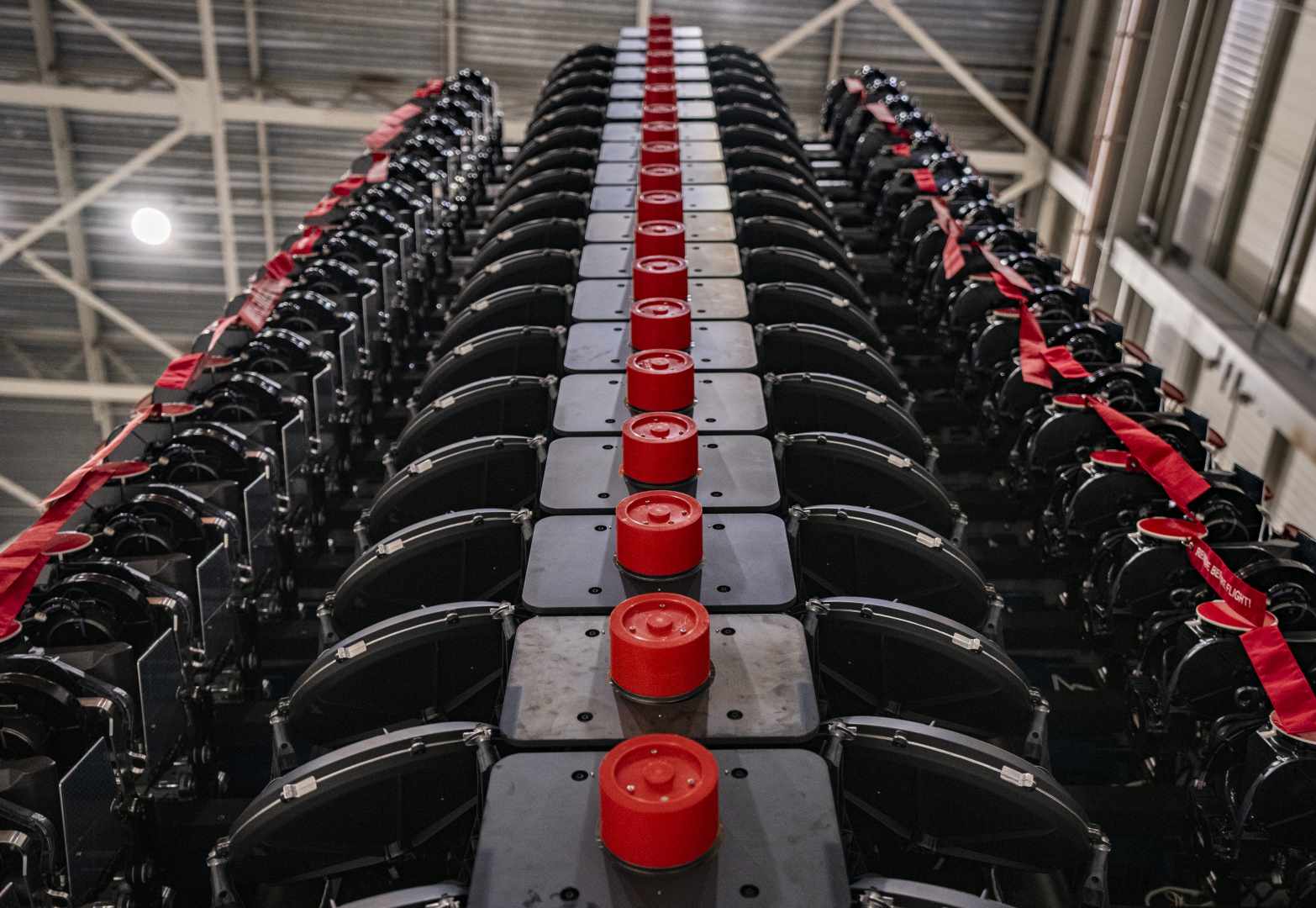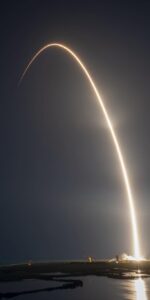
Following a daylong delay, SpaceX successfully flew its 75th Falcon 9 out of Vandenberg Space Force Base, Calif., late Thursday, as a veteran booster roared into the night with 20 Starlink internet communications satellites, including 13 birds equipped with “Direct-to-Cell” functionality. The B1082 core—flying for the fourth time after previous space-bound treks in January, February and just last month—rose from Space Launch Complex (SLC)-4E at the mountain-ringed West Coast site at 9:30 p.m. PDT and returned eight minutes later to a pinpoint landing on the deck of the Autonomous Spaceport Drone Ship (ASDS), “Of Course I Still Love You”, situated offshore in the Pacific Ocean.

Originally slated to fly yesterday, a mere eight hours after another Starlink-laden Falcon 9 mission from the East Coast, SpaceX elected to stand down B1083 for undisclosed reasons. Teams realigned for a backup opportunity extending from 8:20 p.m. PDT through 10:18 p.m. EDT Thursday, with the mission finally going airborne a little past the halfway point of the “launch window” at 9:30 p.m. PDT.
Aboard the booster were 20 Starlinks, including 13 with Direct-to-Cell capabilities, which permit mobile network providers to offer “seamless global access to texting, calling and browsing”, whether “on land, lakes or coastal waters”, without the need to change hardware or firmware. The first Direct-to-Cell satellites flew in January and within six days of reaching orbit SpaceX engineers successfully sent their first text messages using the system.

As a network, Starlink enables high-speed and low-latency internet provision to over 70 sovereign nations and international markets in North and South America, Europe, Asia, Oceania and Africa. Last week, the Hawthorne, Calif.-headquartered launch services provider announced that Starlink connectivity is now available in Uruguay, bringing to 76 the total number of sovereign nations or regions to receive coverage.
The downsized V2 Mini satellites, first flown in February of last year, boast three to four times greater “usable” bandwidth than earlier Starlink iterations. “V2 Minis include key technologies—such as more powerful phased-array antennas and the use of E-Band for backhaul—which will allow Starlink to provide 4x more capacity per satellite than earlier iterations,” SpaceX explained. “Among other enhancements, V2 Minis are equipped with new argon Hall thrusters for on-orbit maneuvering.”

Florida-based intercity operator Brightline adopted Starlink on its trains in 2023, the first passenger rail service in the world to do so. Additionally, El Salvador’s Ministry of Education has begun integrating Starlink capability into its schools to help close the digital divide between urban and remote rural communities and 50 Rwandan schools are now connected via Starlink’s high-speed internet service. As of April, Starlink reportedly had about 2.7 million registered subscribers or customers worldwide.
Flying last night’s mission, B1082 is a relative newcomer to the SpaceX fleet, having flown 2024’s inaugural SpaceX mission in early January. A second launch in February set records including the 300th flight of a Falcon 9 and the 200th consecutive safe landing of a booster, while a third last month lofted the U.S. Space Force’s USSF-62 mission with the first Weather System Follow-on Microwave (WSF-M) meteorology satellite.

It also marked the 75th launch of a Falcon 9 out of Vandenberg since September 2013 and the 15th so far this year. That accomplishment has been made possible by 16 boosters, which have delivered more than 1,400 Starlinks, nine batches of Iridium NEXT global mobile communications satellites, five military missions for the National Reconnaissance Office, the U.S. Space Force and the Space Development Agency (SDA) and four multi-customer Transporter “stacks”, totaling 289 discrete payloads and covering a smorgasbord of science, technology and educational outreach disciplines and applications.
Added to that list, “Vandenberg Falcons” boosted several Earth-observation payloads and NASA’s Double Asteroid Redirection Test (DART) into deep space to investigate the asteroid Didymos and impact its tiny companion, Dimorphos. With an increased launch tempo achieved in the last two years alone, more than half of these 75 West Coast missions have flown since the start of 2023.

And that tempo has seen a rapid uptick in the numbers of “Vandenberg Falcons” flying more regularly than ever before. SpaceX accomplished its first dual-launch month from the Californian site in February 2022, then saw three flights for the first time in April of last year and completed its first four-mission month last January.
Last year, SpaceX managed a personal-best-beating 28 Falcon flights from the West Coast at an average cadence of a launch each 13 days. And 2024’s achievement of 15 flights inside the first half of the year is currently averaging a mission every 8.6 days, which a back-of-the-envelope extrapolation suggests as many as 42 Vandenberg launches before the New Year’s Eve bell tolls.





